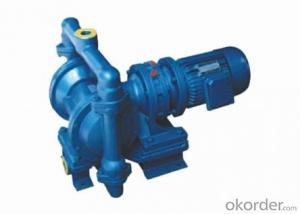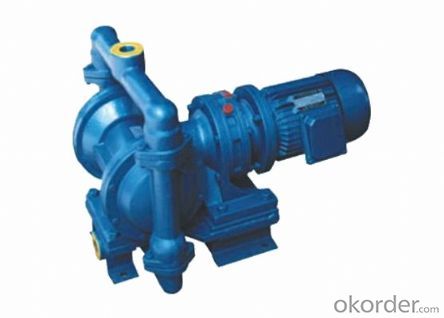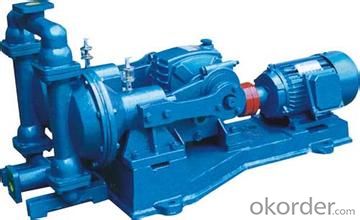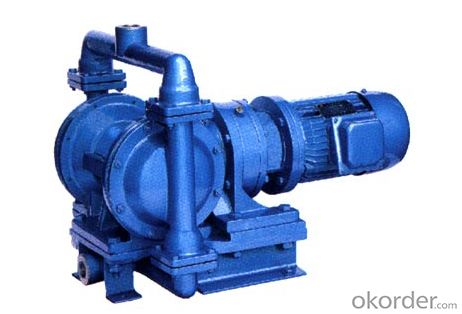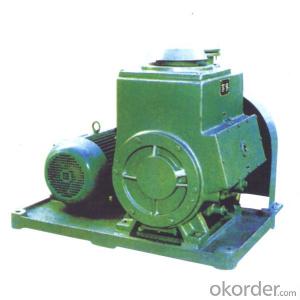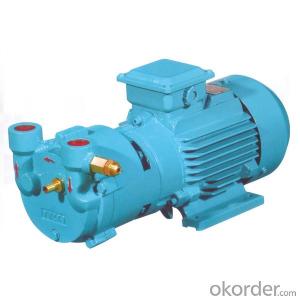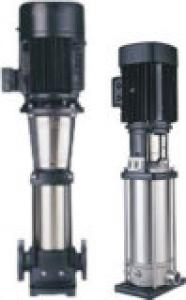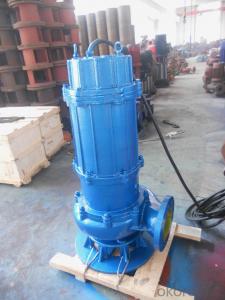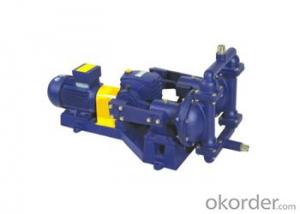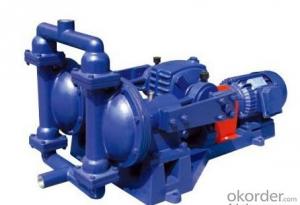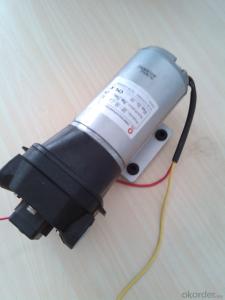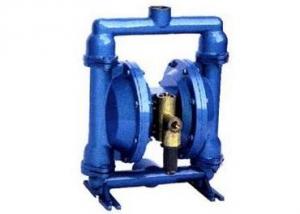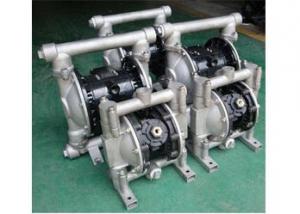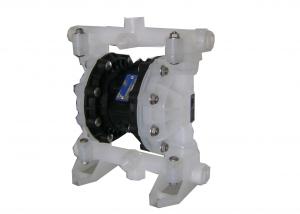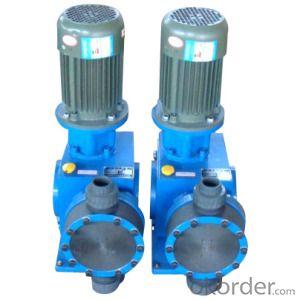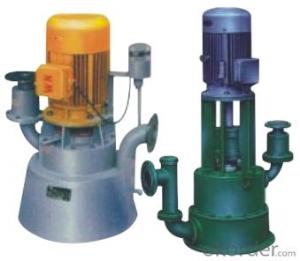DBY series electric operated diaphragm (EOD) pump
- Loading Port:
- Shanghai
- Payment Terms:
- TT OR LC
- Min Order Qty:
- 1 unit
- Supply Capability:
- 500 unit/month
OKorder Service Pledge
OKorder Financial Service
You Might Also Like
DBY series electric operated diaphragm (EOD) pump
Product Description of DBY series electric operated diaphragm (EOD) pump
DBY electric diaphragm pump is a new type of pumps, in recent years, because the diaphragm material made breakthrough progress, the more and more industrialized countries have adopted this type of pump, replacing part of centrifugal pump, screw pump, used in petrochemical industry, ceramic, metallurgy and other industries, DBY electric diaphragm pump suitable for low pressure, namely outlet pressure or less 3 KGF/cm2 occasions. DBY electric diaphragm pump is the factory production of a new type of conveying machinery, the motor through the reducer reduction drive, for all kinds of corrosive liquid, with grain fluid, high viscosity, volatile, flammable and poisonous liquid, all can with suction light suction do.
DBY electric diaphragm pump note: DBY electric diaphragm pump work first open the outlet valve, in the work are prohibited during the outlet valve closed.
Diaphragm materials: neoprene, fluoride rubber, Buna-N rubber and Teflon.
Casing materials: Cast Iron, SS304, SS316, Aluminum, PP, PP lining, PVDF, NBR lining
Usage of DBY series electric operated diaphragm (EOD) pump
All kinds of highly toxic, flammable, volatile liquid.
All kinds of strong acid, strong alkali, strong corrosive liquid.
Can transport 150 ℃ high temperature medium.
As a front-end send pressure device of all kinds of filter press.
Hot water recycling and circulation.
Oil tank truck, oil depot, oil loading and unloading.
Pump suction pickles, jam, mashed potatoes, chocolate, etc.
Pump suction paints, rubber, paint adhesive.
All kinds of porcelain glaze slurry, cement grout, mortar, and mud.
All kinds of rubber paste emulsion, organic solvent, and filler.
Pump for the tanker barge sewage and sit in a clearance from storehouse.
Hops and baking powder slurry, syrup, molasses.
Pump suction sewage in mines, tunnels, tunnels, sewers and sediment.
To transfer all kinds of special medium
Main features of DBY series electric operated diaphragm (EOD) pump
1, DBY electric diaphragm pump does not need to irrigation water diversion, automatic capacity of 7 meters above.
2, through the performance is good, diameter in 10 mm the following particle, mud, etc. Can easily through the.
3, due to the diaphragm will be transported medium and transmission machinery a separate, so medium never to external leakage. And the pump itself without shaft seal, the service life is prolonged greatly. According to the different medium, the diaphragm is divided into chloroprene rubber, fluorine rubber, polybutadience rubber, etc, can satisfy the requirements of different users.
4, pump body medium flows through part, can according to user requirements, divided into cast iron, stainless steel, rubber lining, the motor can be divided into ordinary type and explosion-proof type two kinds.
FAQ
Q: Are CNBM pumps available in DIY stores?
A: Yes, currently, we’re available for DIY stores all over the world.
Q: Where do I have to send pumps for service?
A: You must send them to the CNBM PUMP Service Point or, after contacting Customer Care, to the CNBM PUMP service center in China.
Q: Are your pumps acid-proofed?
A: To choose the right pumps for chemical applications, we do need further details on hydraulic operations as well as on the type, concentration and temperature of the liquid.
Q: Can your pumps mount Eff.1 motors
A: Currently, only on request though this will shortly be a CNBM standard.
Q: Are your pumps protected against dry running?
A: No, unprotected centrifugal pumps are not generally designed for dry running. It is important to give us or your dealer as much information as possible about the system in which the pump is used. Inlet pressure, the type of liquid to be pumped, together with relative density, viscosity and temperature, for example, are required in order to allow CNBM to recommend the right pump with the right gaskets for a long operating lifetime.
- Q: Can an air pump be used for inflating air mattresses for camping?
- Yes, an air pump can be used for inflating air mattresses for camping. In fact, it is one of the most convenient and effective ways to inflate an air mattress. Air pumps designed specifically for inflating air mattresses are readily available in the market. These pumps are usually compact, lightweight, and portable, making them ideal for camping trips. They can be powered by batteries, electricity, or manual foot pumps, depending on the model. Using an air pump ensures quick and effortless inflation, allowing you to set up your air mattress easily and comfortably during your camping adventures.
- Q: How does an air pump regulate air flow in different applications?
- An air pump regulates air flow in different applications through various mechanisms and control systems. The specific method of regulation depends on the type of air pump and its intended application. In general, an air pump can regulate air flow by adjusting the speed or volume of air it delivers. This can be achieved through several means: 1. Adjustable valves: Many air pumps feature adjustable valves that control the amount of air flowing through the system. By manipulating the valve opening, the user can increase or decrease the airflow to meet the desired requirements. 2. Pressure regulators: Some air pumps, particularly those used in pneumatic systems, utilize pressure regulators to maintain a consistent and controlled air pressure. These regulators monitor the system's pressure and automatically adjust the airflow to maintain the desired pressure level. 3. Variable speed drives: Certain types of air pumps, such as those with electric motors, employ variable speed drives to regulate air flow. By adjusting the motor's speed, the pump can deliver more or less air as needed for the application. 4. Feedback control systems: Advanced air pumps may incorporate feedback control systems that continuously monitor and adjust the air flow based on specific parameters. These systems utilize sensors to measure variables like temperature, pressure, or flow rate, and then automatically adjust the pump's operation to maintain the desired airflow. 5. Manual control: In some cases, air pumps can be regulated manually by the user. This can involve adjusting the pump's settings, such as speed or valve openings, to achieve the desired air flow rate. Overall, air pumps employ a variety of mechanisms and control systems to regulate air flow in different applications. The method used depends on factors such as the type of pump, the specific requirements of the application, and the desired level of control.
- Q: How does an air pump handle variations in air density during inflation?
- The purpose of an air pump is to accommodate changes in air density when inflating by adjusting the applied pressure. Air density can fluctuate due to factors such as temperature, altitude, and humidity. When using an air pump to inflate an object, it typically includes a gauge or pressure control mechanism for the user to monitor and modify the delivered pressure. In situations where the air density is higher, like in colder temperatures or at lower altitudes, the air pump will increase the pressure to ensure proper inflation. This is because higher air density necessitates a larger number of air molecules to occupy the same volume, hence a higher pressure is required to achieve the desired inflation level. On the other hand, when the air density is lower, such as in warmer temperatures or at higher altitudes, the air pump will decrease the pressure to prevent over-inflation. This is because lower air density requires fewer air molecules to fill the same volume, making a lower pressure sufficient to achieve the desired inflation level. Moreover, certain air pumps may possess built-in sensors or automatic pressure regulation systems that can detect and adjust the pressure based on the prevailing air density. These systems guarantee consistent and accurate inflation regardless of variations in air density. In conclusion, an air pump manages variations in air density during inflation by allowing the user to adjust the delivered pressure and, in some cases, by automatically regulating the pressure based on the current air density. This ensures proper inflation of the object irrespective of temperature, altitude, or humidity conditions.
- Q: How does an air pump handle oil mist?
- An air pump generally cannot handle oil mist on its own as it is not designed to separate or filter out oil particles. However, if oil mist needs to be removed from the air, an additional oil mist separator or filter can be installed in the air pump's system to effectively handle and separate the oil mist from the air.
- Q: What is the glass tube that the air pump connects to the air compressor?
- Pneumatic components AFC2000 is not good, usually buy new, rarely sell accessories
- Q: Can an air pump be used for hydroponics?
- Yes, an air pump can be used for hydroponics. In fact, it is an essential component of many hydroponic systems. Air pumps are used to provide oxygen to the roots of the plants in hydroponics, as they don't have access to natural oxygen sources like soil. The air pump pushes air through an air stone or diffuser, which creates bubbles in the nutrient solution. These bubbles help to oxygenate the water and provide a constant supply of oxygen to the roots. Additionally, air pumps can also be used to create water movement or circulation in hydroponic systems, which can help prevent the growth of algae and promote nutrient absorption by the roots. Overall, an air pump is a crucial tool in maintaining a healthy and thriving hydroponic garden.
- Q: What are the common maintenance tasks for an air pump?
- To ensure the air pump functions properly, it is necessary to regularly clean and inspect it, check and replace filters, lubricate moving parts, and ensure the electrical connections are secure. To remove any dirt, debris, or algae that may accumulate in the pump, it is important to clean and inspect it on a regular basis. This can be done by disconnecting the pump from the power source and removing it from the aquarium or pond. Then, a soft brush or cloth should be used to clean both the exterior and interior components. Special attention should be given to delicate parts to avoid causing any damage. Checking and replacing filters is crucial for the proper functioning of the air pump. These filters prevent debris from entering the pump and causing damage. Regular inspection and cleaning or replacement of filters should be carried out as needed. If the filters become clogged, it can reduce airflow and strain the pump, resulting in decreased performance or potential damage. Lubricating the moving parts of the air pump is another important maintenance task. This helps ensure smooth operation of parts like the diaphragm or piston. It is essential to use a lubricant recommended by the manufacturer and apply it according to the provided instructions. Over-lubrication should be avoided as it can lead to clogging or malfunctioning of the pump. Proper electrical connections are vital for the safe and efficient operation of the air pump. Regularly inspect the power cord for any signs of damage or fraying, and replace it if necessary. Check the electrical outlets to ensure they are properly grounded. Additionally, verify that the power supply matches the pump's requirements to prevent overheating or electrical issues. In conclusion, the maintenance tasks for an air pump include regular cleaning and inspection, checking and replacing filters, lubricating moving parts, and ensuring proper electrical connections. Following these practices will help prolong the lifespan of the air pump and maintain its optimal performance.
- Q: Can an air pump be used for inflating air beds with built-in pillow-top layers?
- Certainly! Air beds with built-in pillow-top layers can indeed be inflated using an air pump. These pumps are specifically designed to inflate various inflatable items, including air beds equipped with pillow-top layers. By attaching the pump to the air valve on the bed, users have the ability to adjust the bed's pressure and firmness simply by controlling the amount of air being pumped into it. It is crucial to verify that the pump possesses the suitable nozzle or attachment to fit the specific air valve of the air bed being inflated.
- Q: What is the maximum number of air pumps that can be connected in series?
- The maximum number of air pumps that can be connected in series depends on the specific requirements and limitations of the air pump system. Generally, it is advisable to limit the number of pumps in series to minimize pressure drop and prevent overloading the system.
- Q: Can an air pump be used for inflatable outdoor seating?
- Certainly! An air pump is capable of being utilized for inflatable outdoor seating. As a matter of fact, it stands as the prevailing approach for inflating outdoor seating options like inflatable chairs, sofas, or loungers. The air pump is specifically engineered to promptly and effectively inflate objects by compelling air into them. These pumps are commonly equipped with diverse nozzles or adaptors to accommodate varying valve sizes encountered in inflatable seating. The use of an air pump ensures that the seating is adequately inflated, thereby guaranteeing comfort and safety. Additionally, numerous air pumps also incorporate a deflate function, facilitating the swift deflation and storage of the seating when not in use.
Send your message to us
DBY series electric operated diaphragm (EOD) pump
- Loading Port:
- Shanghai
- Payment Terms:
- TT OR LC
- Min Order Qty:
- 1 unit
- Supply Capability:
- 500 unit/month
OKorder Service Pledge
OKorder Financial Service
Similar products
Hot products
Hot Searches
Related keywords
